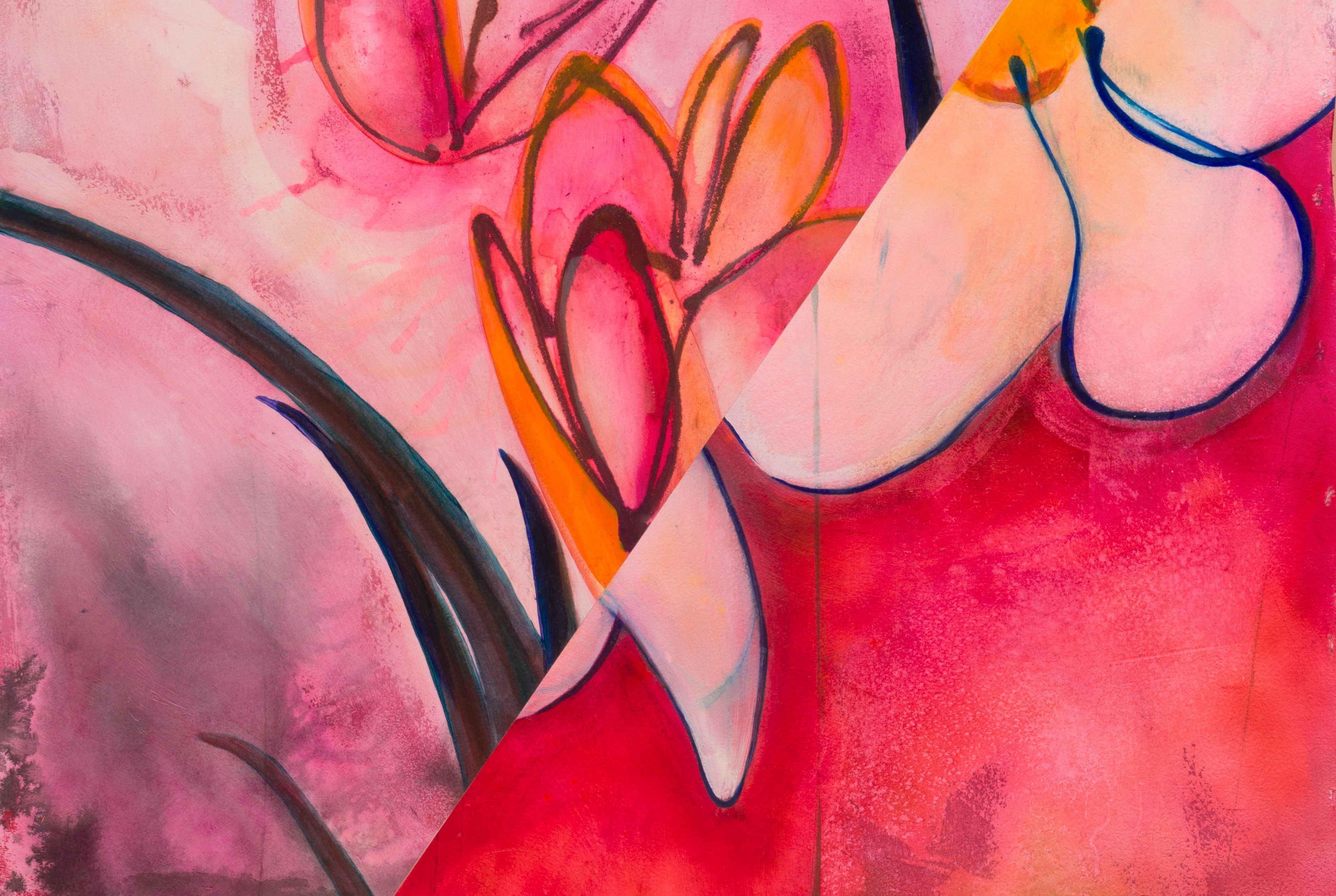Simone Subal Gallery is proud to announce the opening of Baseera Khan’s Floral Fix, Khan’s second solo exhibition with the gallery, on Friday, April 12th, 2024, 6 - 8PM at 131 Bowery, NY.
Floral Fix marks Baseera Khan’s passionate return to painting, a medium that they are drawn to for its emotional and gestural immediacy, and capacities for embodiment. In these new paintings, Khan studies the flora of Kashmir, examining both their intrinsic medicinal qualities and exploitation in global markets. The oils and pigments of Kashmiri flowers are extracted for beauty serums, makeup, and scents in exclusive luxury goods—uses that now threaten the indigenous plants with extinction. In Floral Fix, Khan critiques Western mythologies of self-care, and compulsive beauty “fixes,” that are built through a systematic extraction of resources from the subcontinent. Their paintings engage the polarities of beauty, medicine, and violence, that are latent in the natural forms of orchids, lotuses, poppies, and saffron crocuses. To make their works, Khan submerges hand-crafted paper in water, which they then stack with alcohol-based inks, crude oil, and oil paint—materials that repel one another as they intermix. Possessing radiant hues of greens, pinks, and purples, Khan’s transfixing flowers appear both emergent and smothered, vitally blooming and bleeding in a chemical field.
At the center of the exhibition is an expansive grid of ten paintings, a field of flowers that extends ten feet high, and sixteen feet long. Each unit of the grid consists of two paintings that the artist cut along a diagonal and sutured together—two flowers meeting diametrically as one. Together the composition forms a sacred geometry or pattern—like a quilted square, or the recurring motifs of a Kashmiri rug. By engaging the “cut” as a method, Khan’s paintings extend a language that exists in their previous work in collage, a rupture that summons new spatial kinships and forms. And through these cuts, Khan’s floral figurations enter the language of abstraction, to which the artist is committed. The field’s geometries begin to invoke other formations, like agrarian crop lines or a military airfield, read from above. In another series of smaller works on wood panels, the artist extends this visual vocabulary, while integrating fragments of actual Kashmiri rugs, whose embroidered patterns contain the flowers the artist paints.
As a companion to these grids of flowers, Khan also presents a new floor-based installation of plastic water bags, filled with crude oil, water, and pigmentation—the same materials that compose their paintings. Khan’s soft bags of colored water are reminiscent of artist Senga Nengudi’s Water Compositions series (1969-70), as they engage the vitality of liquid color. Khan’s formulations, however, dispersed across the gallery floor, appear like airdropped resources—failed attempts at humanitarian aid. Khan’s poetic forms extend into the geopolitics of the present, from Kashmir to the shadows of colonial occupation around the world.
Still, Khan fixates on their flowers’ potentialities of healing. To this end, their exploration of color and luminosity is key. While closely studying the inherent medicinal qualities and natural pigmentation of their floral subjects, the artist arranges colors according to principles of energy and chakra meditation, and encases their works in custom frames of iridescent plexiglass. The act of painting itself becomes the antidote, the elixir to states of physical and psychic distress.
– Allie Tepper, 2024






























































































































